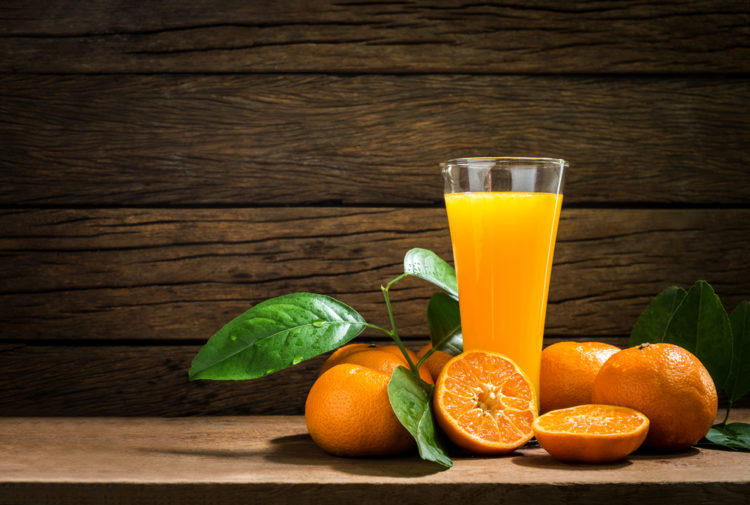Sugar gets a pretty bad rap these days.
The sweet carbohydrates are all over the news being linked to heart disease, diabetes, cancer, depression, and even skin problems.(1)(2)(3) Despite all these warnings against sugar, Americans are eating more sugar than ever, and our weight and health are seeing the consequences.
All of this sugar talk has sparked the discussion between added sugars vs. natural sugars. We know we are concerned about sugar, but is it the sugar in bananas or the sugar in soda we should really be concerned with? Or both?
In 2016, the FDA announced an update to the nutrition facts label. The new label (to be displayed on every single food and beverage by 2020), now breaks the sugar category down further so that the consumer can quickly decipher how much of the sugar they’re consuming is naturally occurring or added to the product.
As this label is changing, it’s time we better understand what all of this information means.

So, What Are Added Sugars and What Are Natural Sugars?
According to the FDA,
“added sugars includes sugars that are either added during the processing of foods, or are packaged as such (e.g., a bag of table sugar), and also includes sugars from syrups and honey, and sugars from concentrated fruit or vegetable juices.”
So natural sugars would be any sugar that is naturally occurring in a food (think lactose in milk or fructose in a banana).

Does Fruit Juice Count as Added Sugar?
Fruit juice can be a confusing situation for some. If you want more clarification check this out, but the Cliffnotes: 100% juice is naturally occurring sugar, foods sweetened with concentrated fruit juice (like grape juice) are considered sugar-sweetened, and juice drinks that are made from juice concentrate and water don’t count as having added sugars so long as it’s as sweet as it would be if it were regular fruit juice. Complicated, we know.

Can My Body Tell the Difference?
The answer here is yes and no.
While your body may not “know” that the sugar came from an apple vs. the sugar from a soda initially, the other components in these items make a large difference in the way your body ultimately responds.
Say you drink a 12-ounce soda. That’s about 40 grams of sugar that will immediately cause an insulin spike. This spike in insulin tells our cells to take up glucose (aka sugar) for energy. Given that added sugars are typically eaten in excess, our bodies do not need all of that energy, and as a result we are more likely to convert these extra sugars into fat.
This is an adaptation that was very beneficial for our hunter-gatherer ancestors, but it’s not necessary in the world of food abundance we live in today. This insulin spike is soon followed by a blood sugar crash. Low blood sugar sends a signal to our brain that we need energy and it can cause us to overeat. This insulin cycle that is caused by excessive sugar intake is a trap. The only way out of the trap? Eat foods that provide our bodies with more than just sugar with no other nutritional value.
Take an apple, for example. Apples (and all fruits) have naturally occurring sugars. One small apple has about 80 calories and 15 grams of sugar. The difference is that the apple is also giving us fiber, which keeps us feeling full longer and modulates the insulin spike, as well as essential vitamins and minerals to promote overall health and body function.

Remember, We Need Sugar!
As humans, our bodies need ample calories, protein, fat, vitamins, and minerals to promote healthy growth and function.
We also need carbs (aka sugar)! Sugars are the building blocks of carbohydrates, our bodies’ and brains’ preferred fuel source. The sugars naturally occurring in fruits, starchy vegetables (peas, potatoes, pumpkin), beans and legumes, and even dairy come with other vital nutrients. These are the sugar sources we should place an emphasis on.
The health effects of a high sugar diet are results of overeating sugars. Our health crisis is most definitely not a product of overdoing it on apples.
Unfortunately, added sugar does not provide anything of nutritional value. These calories are replacing what could be other, more nutritious foods, leaving people with excess body fat. A body that is simultaneously void of nutrients and nutritionally starving.

Where Should I Look Out for Added Sugars?
Processed foods are generally the culprit here. There are estimates that almost 60% of our calorie intake between 2007-2012 came from processed food.(4) How do companies make processed foods taste good and stay on the shelf longer? Adding sugar! Sugar gives us the sweet taste we know and love and slows down the growth of bacteria, making it a processed food’s dream.
While it is obvious that candy, ice cream, and soda all contain added sugar, there are also many foods deemed “healthy” that companies ramp up the sweetness on. Granolas, non-dairy milk alternatives, protein bars, yogurts, crackers, tomato sauce, peanut butter, etc. can all be filled with sugar.
Start paying attention to your nutrition facts label. The new label will tell you how many grams of sugar is added, and the ingredients list can help you understand what these added sources are. There are a whopping 61 different names for added sugars that manufacturers can list on a label. Check out this list for more information on the names to look out for.
How Much Added Sugar Should I Have in a Day?
A general rule of thumb is that it’s good to keep added sugar to 10% of your calories or less. This suggestion comes from the idea that if you are eating more than 10% of your calories from poor nutrition sources, it will be hard for you to meet your overall nutrient needs. For a man, this is around 38 grams (or 9 teaspoons) and for a woman this is 25 grams (or 6 teaspoons).

What Can I Do Now?
Now, don’t go crazy with this. There average American is taking in 17 teaspoons of sugar daily, so cutting back from that to 6 to 9 teaspoons may be a very big jump! I suggest starting small. Do you drink three sodas a day? Can you replace one with a seltzer? Maybe you are having a sugar sweetened yogurt each morning. Can you try a plain and add cinnamon and some berries? Starting with small changes make the biggest and most sustainable differences.
A little bit of added sugar is not going to kill you. In fact, that warm chocolate cookie is good for the soul, and the health benefits of a good relationship with food will outweigh the stress from avoiding all forms of added sugar.
Instead, I invite you to be curious about it. Start by paying attention to your typical day and see where you can make changes. I personally like to choose products like nut milk, peanut butter or tomato sauce without added sugar, and then enjoy my ice cream in peace.
References
1. Guo X, et al. Sweetened beverages, coffee, and tea and depression risk among older US adults. PLoS One. 2014 Apr 17;9(4):e94715.
2. De Pergola G, et al. Obesity as a major risk factor for cancer. J Obes. 2013;2013:291546.
3. DiNicolantonio JJ, et al. The Evidence for Saturated Fat and for Sugar Related to Coronary Heart Disease. Prog Cardiovasc Dis. 2016 Mar-Apr;58(5):464-72.
4. Baraldi LG, et al. Consumption of ultra-processed foods and associated sociodemographic factors in the USA between 2007 and 2012: evidence from a nationally representative cross-sectional study. BMJ Open. 2018 Mar 9;8(3):e020574.
Added Sugar FAQs
What is added sugar on a nutrition label?
“Added sugars” includes sugars that are either added during the processing of foods, or are packaged as such (e.g., a bag of table sugar). It also includes sugars from syrups and honey, and sugars from concentrated fruit or vegetable juices.
Is "added sugar" worse for me than regular sugar?
Mostly yes. The body might initially recognize sugar from an apple and sugar from a soda in the same way, but the difference is what’s included with the sugar. In an apple you get fiber to blunt the blood sugar rush and extra vitamins and minerals. In the soda, there’s no extra nutrition and it’s far more likely to cause an unpleasant sugar high — followed by a crash that could to additional sugar cravings.